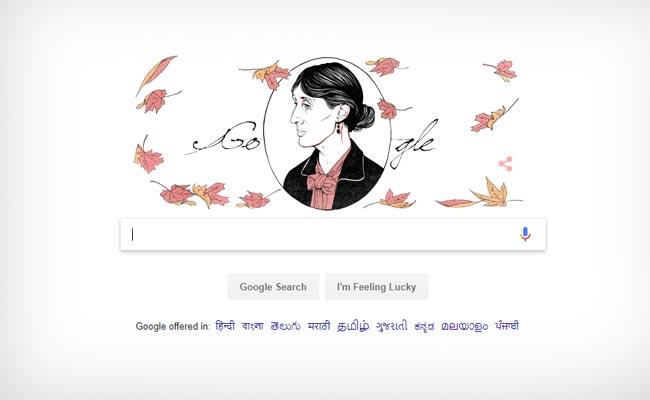Google Doodle: Virgina Woolf

New Delhi: Virginia Woolf, who pioneered the use of "stream of consciousness" narrative approach that elevated mundane settings as she examined the complex interior lives of her characters, was celebrated by Google on Thursday with a Doodle on her 136th birth anniversary.
London-based illustrator Louise Pomeroy created the Doodle, which Google said was meant to reflect her "minimalist style".
Woolf's fiction showed us that a person's inner life is as complex and strange as any plot. One of the foremost novelists of the 20th century, born in London in 1882, Woolf described in a 1921 diary entry how memories of family holidays and the surrounding landscape, especially the Godrevy Lighthouse, impacted her fiction in later years.
Also Read: Google Doodle Honours Fearless Nadia On Her 110th Birth Anniversary
"Why am I so incredibly and incurably romantic about Cornwall? One's past, I suppose; I see children running in the garden...The sound of the sea at night... almost forty years of life, all built on that, permeated by that: so much I could never explain," Woolf wrote employing the stream of consciousness approach best explaining her technique.
Woolf was homeschooled in the English classics and Victorian literature for much of her childhood. She began writing professionally in 1900, becoming a significant member of London's literary society and the Bloomsbury Group, a collective of prominent contemporary intellectuals and artists.
While Woolf grew up surrounded by the London literary scene, it was her childhood memories of visiting the Cornish coast that inspired the settings of her most powerful narratives, including "To the Lighthouse" (1927) and "Mrs Dalloway" (1925).
Her literary reputation declined after the World War II, but her works attracted renewed focus thanks to the 1970s feminist movement, the Sun reported.
Woolf's best known nonfiction works, "A Room of One's Own" (1929) and "Three Guineas" (1938), examine the challenges female writers and intellectuals faced due to the disproportionate legal and economic power held by men
IANS





